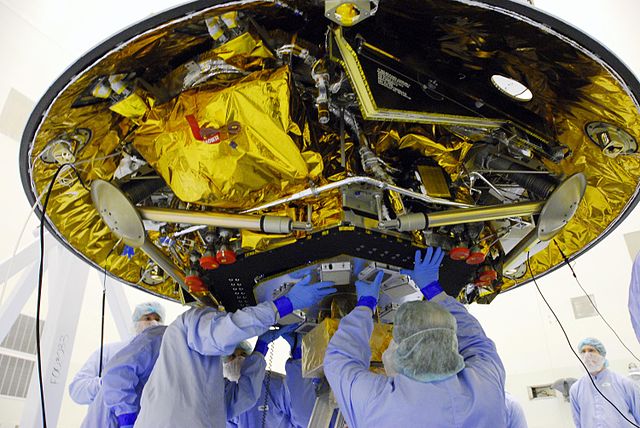 |
This is a file from the Wikimedia Commons. Information from its description page there is shown below.
Commons is a freely licensed media file repository. You can help.
|
| Description |
English: Phoenix Mars Lander being worked on by NASA engineers. The planned Operational Life of the Phoenix Lander is 90 Martian days. Each Martian day is 40 minutes longer than an Earth Day.
|
| Date |
2008-05-26 (original upload date)
(Original text : Mar 26, 2008) |
| Source |
Transferred from en.wikipedia; transfer was stated to be made by User:Viriditas.
(Original text : http://www.discoverychannel.ca/flipbook/flip.aspx?fid=2628) |
| Author |
Original uploader was Sepeople at en.wikipedia |
Permission
( Reusing this file) |
PD-USGOV-NASA.
|
Licensing
| Public domainPublic domainfalsefalse |
 |
This file is in the public domain because it was solely created by NASA. NASA copyright policy states that "NASA material is not protected by copyright unless noted". (See Template:PD-USGov, NASA copyright policy page or JPL Image Use Policy.) |
|
|
|
Warnings:
- Use of NASA logos, insignia and emblems are restricted per US law 14 CFR 1221.
- The NASA website hosts a large number of images from the Soviet/ Russian space agency, and other non-American space agencies. These are not necessarily in the public domain.
- Materials based on Hubble Space Telescope data may be copyrighted if they are not explicitly produced by the STScI. See also {{ PD-Hubble}} and {{ Cc-Hubble}}.
- The SOHO (ESA & NASA) joint project implies that all materials created by its probe are copyrighted and require permission for commercial non-educational use.
- Images featured on the Astronomy Picture of the Day (APOD) web site may be copyrighted.
|
File usage
The following pages on Schools Wikipedia link to this image (list may be incomplete):
You can learn about nearly 6,000 different topics on Schools Wikipedia. SOS Children's Villages believes education is an important part of a child's life. That's why we ensure they receive nursery care as well as high-quality primary and secondary education. When they leave school, we support the children in our care as they progress to vocational training or higher education. If you'd like to help, learn how to sponsor a child.





